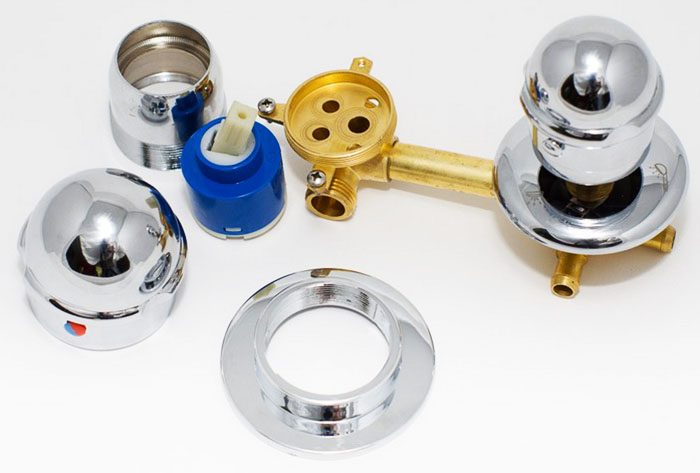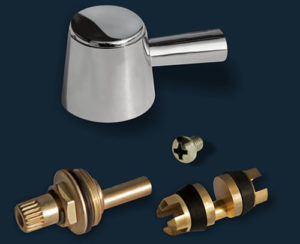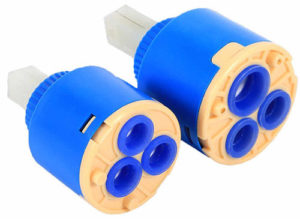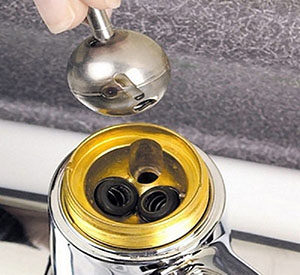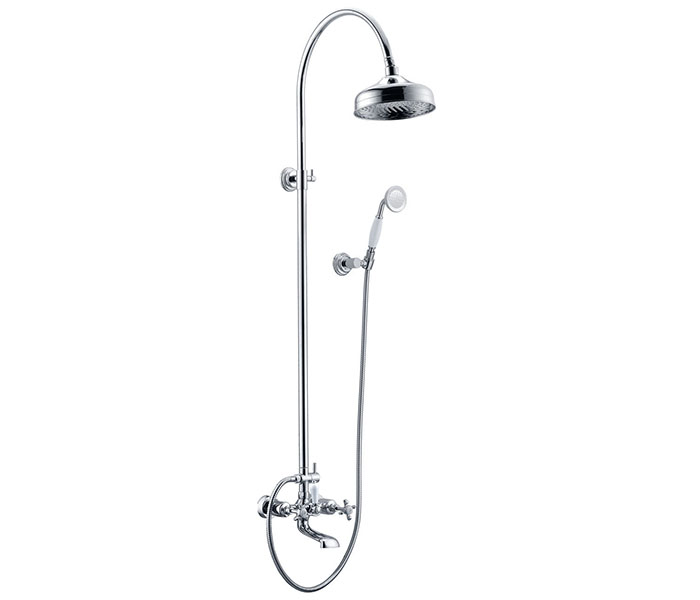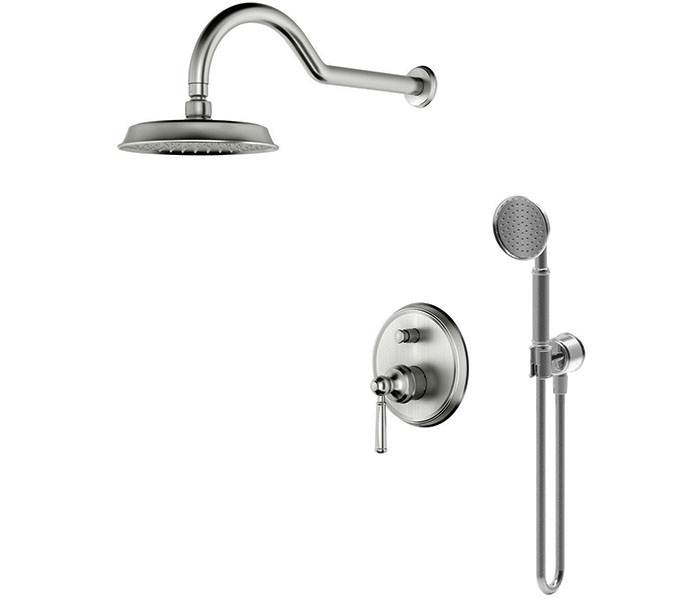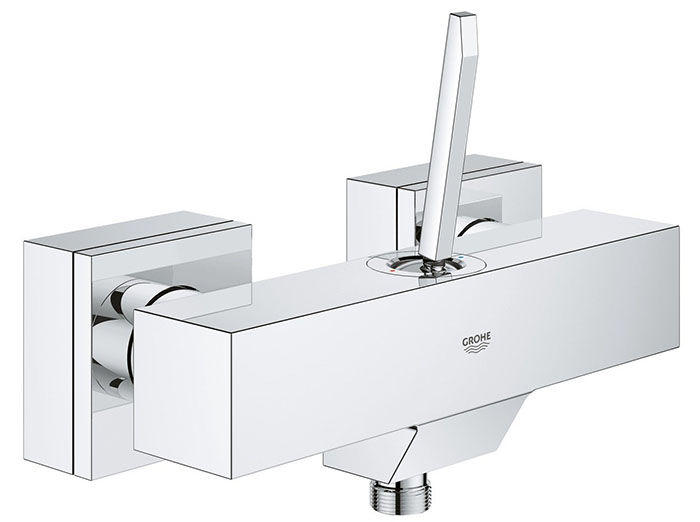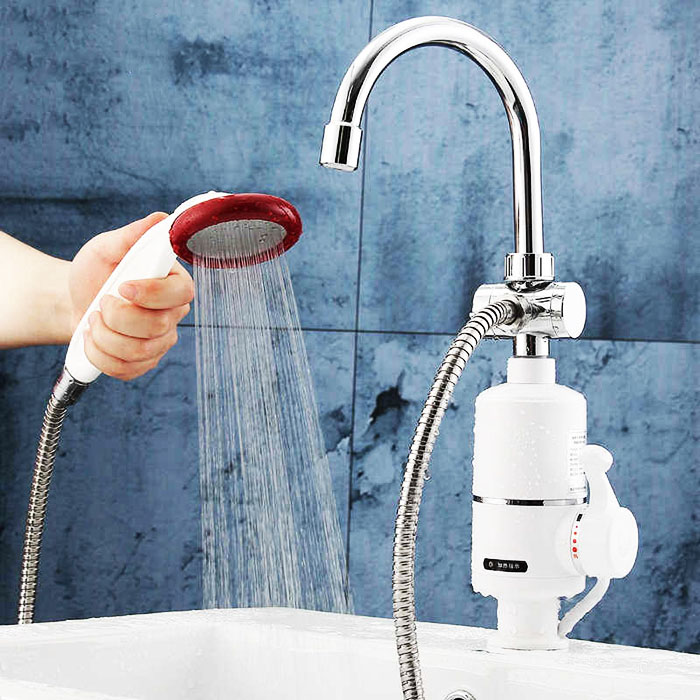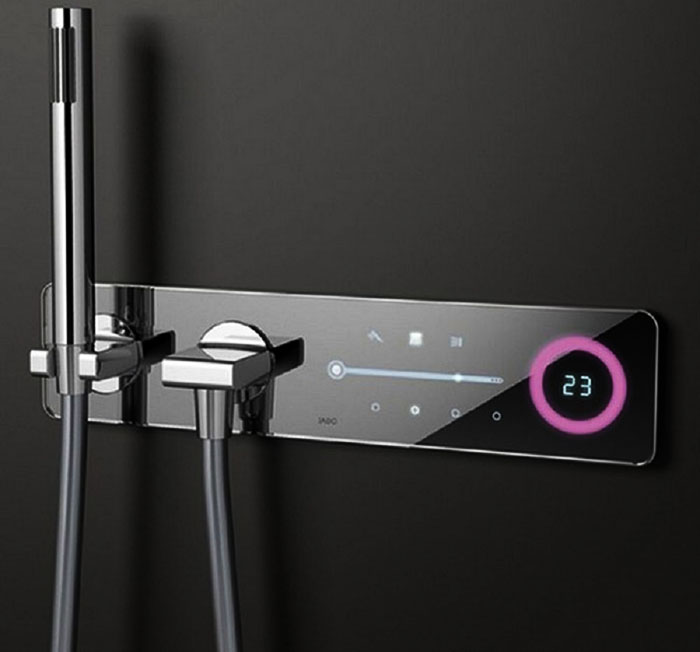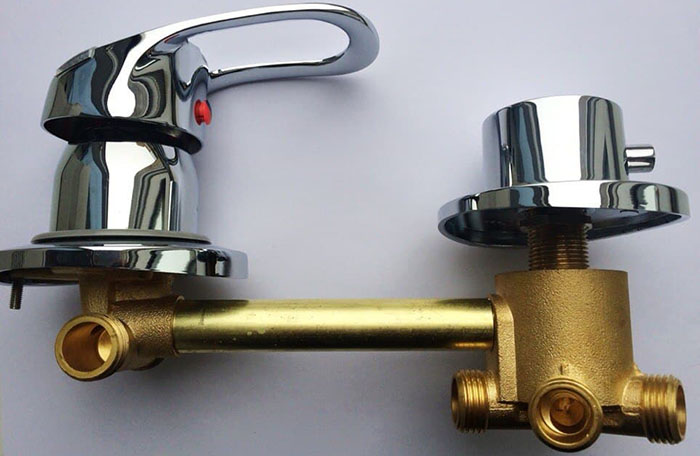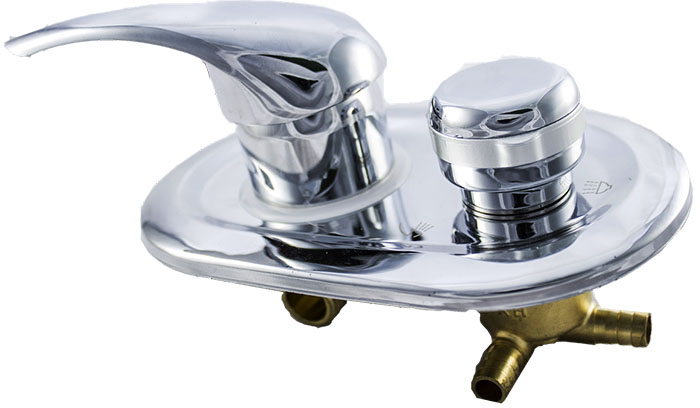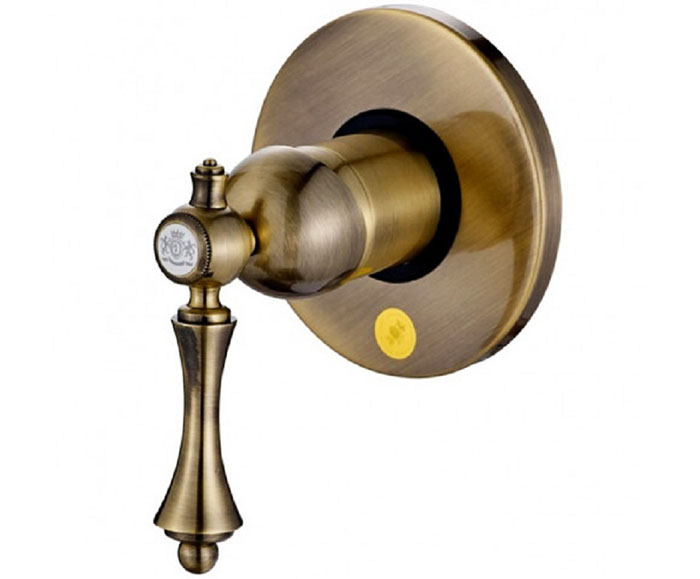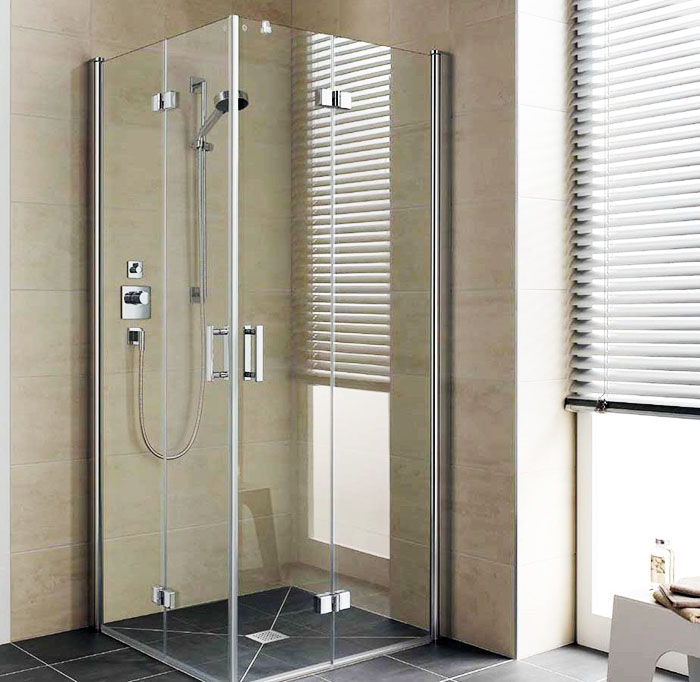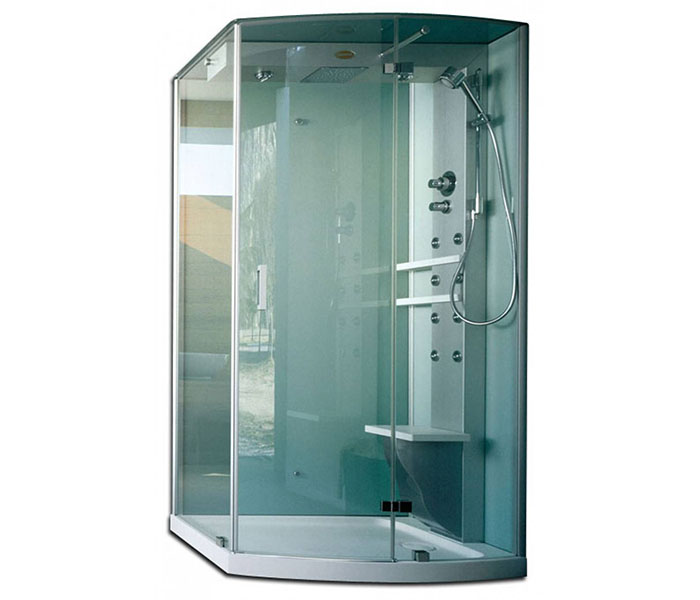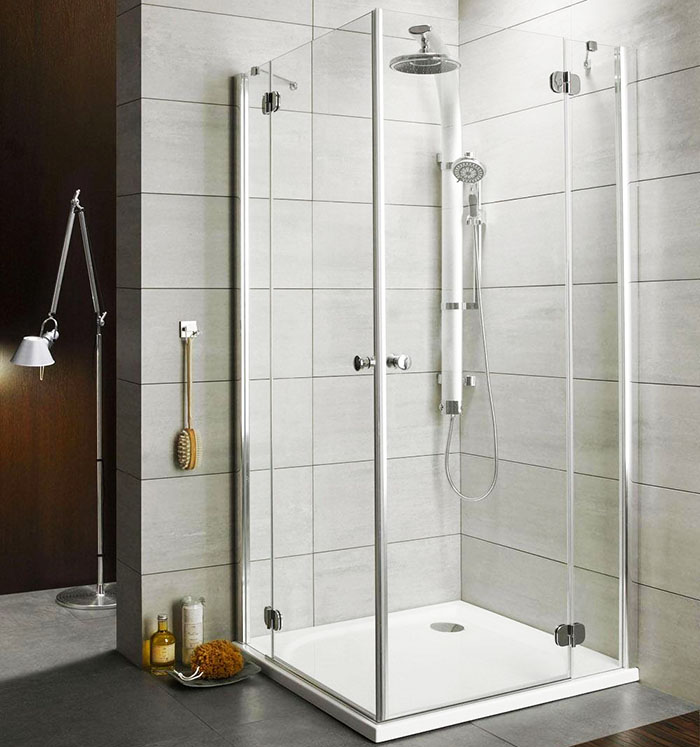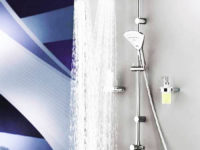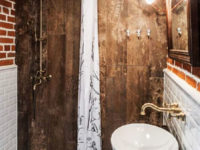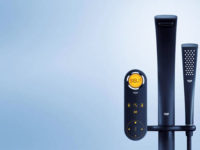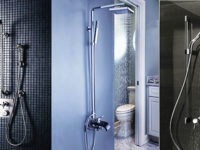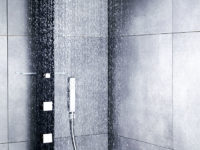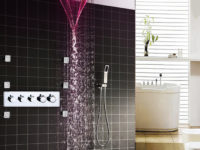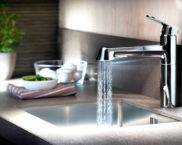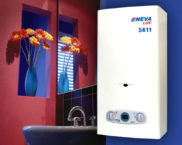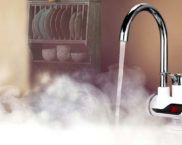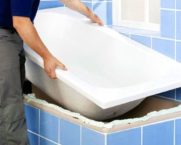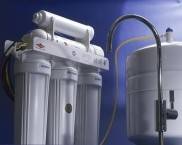Faucet for a shower cabin: the choice of a device according to the main operational characteristics
By choosing shower cabin, the buyer rarely thinks about such an important part of it as mixer, if information about it is not indicated in the manufacturer's advertising brochures. Questions about material, construction and function usually start to be asked after the device fails. Then the main problem arises - finding compatible equipment to replace. That is why in our article we will pay more attention to manufacturers of faucets for a shower stall, the choice of mechanism, installation method, material of manufacture, etc.
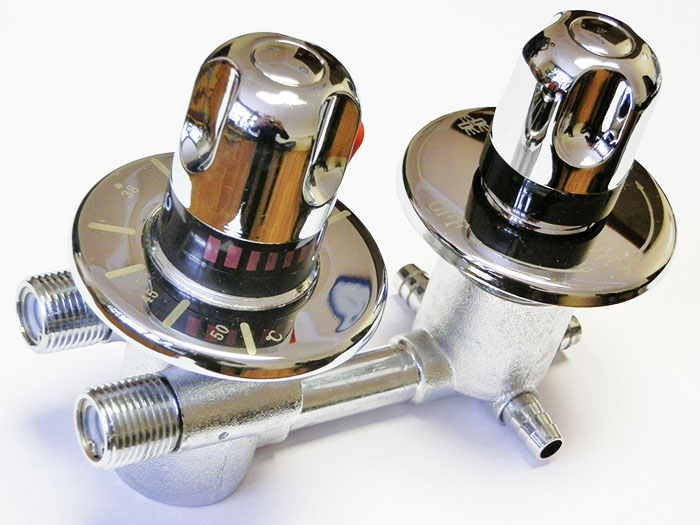
The appearance of the shower mixer differs significantly from the usual forms. Most of it is located inside the front panel of the shower stall
PHOTO :: vvannoi.ru
The content of the article
Principal design
The shower faucet design includes the following elements:
- body, consisting of two casks for cartridges and a connecting tube;
- mixer cartridge - a device that mixes hot and cold water in a certain proportion;
- a divertor (distributor) cartridge - the device distributes cold water flows to various outlets of the shower cabin;
- cartridge fastening parts - clips or nuts, with the help of which the devices are fixed in the casings of the body;
- flywheels (control knobs) - external control elements of the mixer and diverter;
- overlays and other decorative elements.
The principle of operation of the mixer for the shower is as follows. Cold and hot water is connected to the corresponding inlets of the mixing part, which functions like a conventional mixer tap. Then the water of the required temperature through the connecting pipe enters the divertor - a distribution mechanism with 2 to 4 outlets, one of which is always open. Depending on the type of locking mechanism, it can open one or several outputs at once.
Important! In everyday life, there are several variants of the name of the divertor: deviator, divertor, diver. But Wikipedia insists on exactly this version of the name of the distribution technical devices.
In some models of faucets for shower cabins, there are other types of diverters:
| Divertor type | Advantages and disadvantages |
|---|---|
| Affordable cost; high compatibility of devices from different manufacturers. However, it has large dimensions; gaskets included in the design wear out quickly (although they can be easily replaced by yourself) | |
| High reliability and durability; convenient operation; compact size and attractive design. But at the same time, the cartridge cannot be repaired, only replaced; has poor compatibility with other models and manufacturers | |
| Reliable and very durable, however, the mechanism is part of the body, so if it breaks down, you will need to change the entire mixer |
Types of faucets for a shower cabin, their advantages and disadvantages
Faucets for shower cabins to some extent repeat the design and functionality of conventional bathroom or sink faucets. The only difference is the presence of a water distributor (separator) device for one or more directions - a divertor.
By installation method
According to the method of location of the main distributor of the mixer relative to the user, two types of equipment are distinguished:
Wall-mounted (external). Reproduces the design of a standard bathroom faucet, except for the missing spout (tap). The internal device can be mechanical (usually joystick or semi-turn) or electronic (touch). Thermostats can be used as additional equipment. These mixers can be connected to flexible hoses with watering cans, rigid shower racks, or both devices at the same time. This type is the most affordable and easiest to install. They are usually equipped with homemade shower cabins. Of the advantages, it can be noted:
- affordable cost;
- ease of installation;
- versatility.
But this type is not devoid of disadvantages:
- large dimensions;
- many protruding parts and fittings;
- limited functionality.
Embedded. Its design is divided into two main parts:
- External, on which the levers or control valves are located.
- Internal - hot and cold water supply pipes are connected to the receiving part. Hoses of a stationary shower, watering can, massage nozzles, etc. are connected to the distribution part.
The interior of the built-in mixer can be installed directly in the shower panel, provided the mounting holes are compatible, or in a wall recess. More reliable ball and cartridge mechanisms are used to control water flows. They are made from higher quality materials with minimal tolerances. The advantages of this type:
- high reliability;
- ease of replacement;
- several spout devices can be connected at once.
The disadvantages include:
- high cost;
- relatively complex installation;
- the possibility of hardware compatibility issues.
By construction type
All shower faucets can be divided into three main classes depending on their design.
Mechanical. The easiest to use and most affordable option. These mixers are classified according to the type of control mechanisms:
- joystick - the most common, reliable and easy-to-use option;
- semi-revolving crane axle boxes. They are quite popular and no less reliable than joystick ones;
- valve - an outdated design, it is quite rare in faucets for shower cabins.
Electrical. The mixer is equipped with a small instantaneous water heater. The control mechanism is joystick or electronic. Operating modes: using a heating heating element or using a centralized hot water supply. The heating device must be connected to a separate power supply line with its own RCD (residual current device), since the heating element has a rather large power from 0.4 to 1.2 kW.
Electronic (digital, sensory). Usually thermostatic mixers are equipped with electronic control. Such equipment controls all the functions of the shower cabin, from the temperature of the water and the activation of a particular spout device, to the ventilation system, lighting, aromatherapy devices, etc.
Manufacturing material
The material from which the mixer is made not only has a key influence on the duration of its operation, but also gives the product decorative properties.
Brass - an alloy of copper (60-80%) and zinc (20-40%). It is the undisputed leader among raw materials for sanitary products and valves. It has good elasticity and rather high strength characteristics. The material is resistant to corrosion processes, temperature extremes and pressure. The front parts of brass shower mixer taps are usually coated with various galvanic coatings based on chrome, copper or bronze, sometimes enamel. This significantly increases the decorative characteristics of the product.
Stainless steel (with a chromium ratio of at least 13-17%). Sanitary fittings made of stainless steel of adequate quality are one of the most durable and wear-resistant. Unfortunately, almost all manufacturers have a range of stainless steel faucets rather uniform in shape. The high performance characteristics of the product lead to the appearance of numerous fakes for branded mixers, but made of cheap, short-lived alloys.
Bronze... In terms of its technical and strength characteristics, it surpasses copper and brass, and high fluidity in a molten state allows melting products of any shape with a large number of decorative elements. Suitable for showers in classic and retro styles
Polymer materials... Plumbing fittings made of polymeric materials (as a rule, it is high-pressure polyethylene) are quite rare, mainly from little-known Chinese manufacturers. Despite the low cost, it is not recommended to purchase such products, since the duration of their operation rarely exceeds 2-3 years.
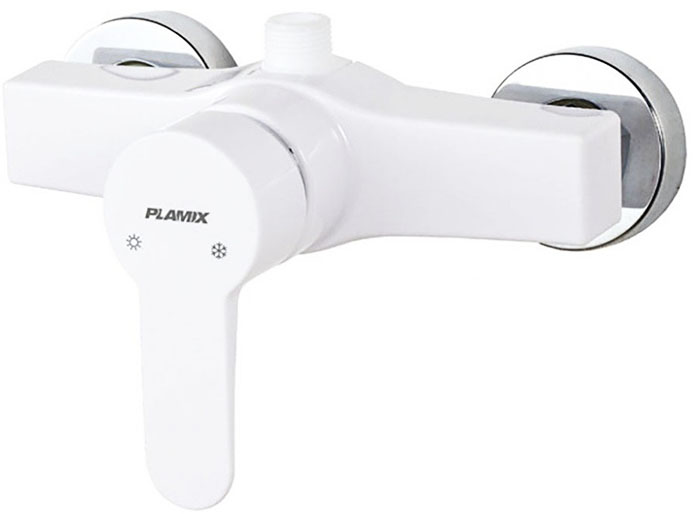
Plastic shower mixers, despite the assurances of manufacturers, are quite fragile and short-lived products that quickly lose their original appearance, which cannot be restored.
PHOTO: images.ua.prom.st
Important! All of the materials listed can be used for both external control and decor parts, and for the internal case. However, bronze and brass are most widely used in the manufacture of internal elements.
Leading manufacturers
When choosing a mixer, first of all, you should pay attention to manufacturers of sanitary equipment specializing in shower cabins. Traditionally, companies from Germany, Italy and Finland are leading in this area.
Huppe, Kermi, Hyber (Germany) - the products of these companies are of high quality, variety of models and wide functionality. Stainless steel and alloy bronze are used as materials for the mixers. All products have a quality certificate.
Jacuzzi, Cerutti (Italy). The products of these companies are of the premium class and have the corresponding price. Mixers are equipped with additional heaters, electronic temperature control devices and multi-purpose diverters. Unfortunately, the components of these companies are not so common in Russia, therefore, in the event of a product failure, there may be certain difficulties with repair and replacement.
IDO Showerama, Timo (Finland). Companies produce high-quality sanitary fittings, including for shower stalls. The warranty period for faucets is 5 years. However, due to high demand, Timo opened production facilities in Hong Kong, which negatively affected the quality of the products.
Criterias of choice
As a rule, shower cabins are offered to the end user fully equipped with mixers. But, in the case of self-assembly or replacement of a product, it is recommended to focus on the following parameters:
- Installation method... The convenience of using the shower depends on it, although in this part of the question more should be guided by tastes. It is more important that the chosen mixer design matches the mounting elements of the rest of the equipment.
- Mixer model... The choice is based solely on personal preferences and financial capabilities.
- Number of modes... The modern shower can offer many functions from tropical rain and cascade to Charcot shower and full body hydromassage. However, each function requires the installation of rather expensive hardware. As for the mixer, its changes will only affect the additional outlet on the divertor.
- Quality, material of manufacture, manufacturer... These parameters are largely interrelated, therefore, choosing a branded manufacturer, the buyer automatically receives a quality product from the right materials.
Video: criteria for choosing a mixer for a shower stall
Video: design, main types of breakdowns and how to fix them
Feedback on the Orange OW02 shower system:
Feedback on the Kaiser SX2060-4 shower system:
Feedback on the Gro Welle "Wassermelone" shower system:
Review of the LightInTheBox shower system:
Review of the Grohe Tempesta Cosmopolitan Flex System 2000 shower system:
- PHOTO: dekorin.me
- PHOTO: dekorin.me
- PHOTO: o-vannoy.ru
- PHOTO: ameranet.com
- PHOTO: santehpremium.ru
- PHOTO: dhresource.com
Summing up
Among the entire range of faucets for shower cabins, it is worth highlighting the simplest devices: external ones with thermostat control, as the optimal combination of affordable cost and functionality. Usually such devices can be easily installed on your own. Sensory built-in mixers require additional settings that can only be performed by a specialist.



